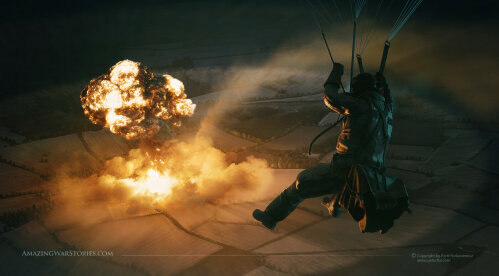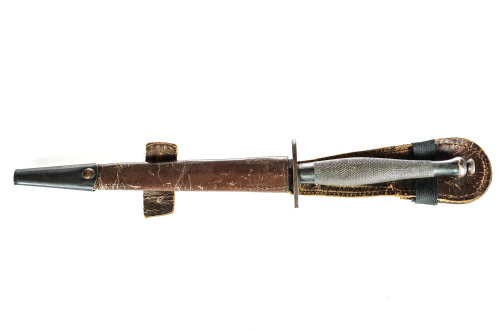Commando Dagger
The Fairbairn-Sykes Commando dagger was designed in the early days of World War II by Colonel William E. Fairbairn and Captain Eric A. Sykes, both of whom had extensive experience in hand-to-hand combat and fighting techniques. The dagger was based on their own experiences with knife combat, and was intended to be a high-quality, deadly weapon for use by commandos and special forces operatives.
The original design of the commando dagger featured a seven-inch blade made of high-carbon steel, with a narrow, symmetrical point and a double-edged blade for optimal cutting and thrusting ability. The hilt was made of a brass alloy, with a knurled grip and a small round pommel for balance.
The dagger was designed to be worn vertically on a special leather scabbard, which could be attached to a combat belt or webbing. The scabbard featured a two-strap system to keep the dagger securely in place during high-speed manoeuvres or parachute jumps.
One of the key design features of the commando dagger was its simplicity and effectiveness. It was designed to be easy to use and maintain, with a sharp, durable blade and a grip that provided excellent control and balance. The dagger was also intended to be a silent, deadly weapon that could be used for effective close-quarters combat in a variety of settings.
Over time, the design of the commando dagger has evolved somewhat to meet the changing needs of special forces operatives and other combat personnel. However, many of the key design elements of the original Fairbairn-Sykes commando dagger remain in use today, and it remains one of the most iconic and effective weapons in the history of modern warfare. Indeed, in Britain, the commando dagger is the emblem of the Royal Marines Commando forces.







